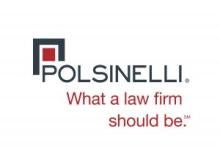Key Takeaways
- Regulatory Relief for U.S. Manufacturing: The EO streamlines FDA and EPA processes to encourage domestic pharmaceutical production.
- Increased Scrutiny of Foreign Facilities: Foreign manufacturers face higher inspection standards and potential tariffs, raising supply chain risks.
- Piece of the Puzzle: Manufacturing EO is paired with other executive orders on trade and bilateral trade agreements.
- Uncertain Policy Landscape: Shifting regulations and trade policies create both opportunities and challenges for biopharma investment decisions.
On May 5, 2025, President Donald J. Trump signed an Executive Order (EO) titled “Regulatory Relief to Promote Domestic Production of Critical Medicines.” The order’s goal is to strengthen the U.S. pharmaceutical supply chain by streamlining regulatory processes, encouraging domestic manufacturing of pharmaceuticals and their inputs, and intensifying the inspection of pharmaceutical manufacturing facilities located outside of the United States.
The May 5 order is the carrot to accompany an expected tariff “stick” on pharmaceutical importations, which President Trump signaled would be forthcoming and appears to have materialized in the form of a just-announced most-favored-nation pharmaceutical pricing executive order. In addition, last month, the Trump Administration initiated a Section 232 investigation of pharmaceutical imports to determine whether imports of pharmaceuticals threaten to impair U.S. national security and therefore should be subject to tariffs or other measures. Taken together, the EO and proposed tariffs will make pharmaceuticals sourced outside the United States more expensive and, perhaps, subject to increased FDA-inspection scrutiny and potential supply disruptions.
The administration’s goal is to accelerate investment in U.S.-based manufacturing and thus onshore some of the manufacturing. This update provides a brief overview of the EO and discusses its potential short- and longer-term implications.
Key Provisions of the EO:
1. Streamlining FDA Regulations:
- The EO tasks the United States Department of Health and Human Services (HHS) and U.S. Food and Drug Administration (FDA) with reviewing and eliminating duplicative or unnecessary regulations that hinder domestic pharmaceutical manufacturing.
- The EO directs the FDA to maximize the timeliness and predictability of FDA review with the stated goal of accelerating the development of domestic pharmaceutical manufacturing of “pharmaceutical products, active pharmaceutical ingredients, key starting materials and associated raw materials.”
- The EO instructs the FDA to work on expanding programs and guidance to provide early technical advice to domestic facilities before they are operational and to work to ensure domestic inspections “are prompt, efficient, and limited to what is necessary to ensure compliance with the Federal Food, Drug and Cosmetic Act (FDCA) and other Federal law.”
2. Enhancing Inspection of Foreign Manufacturing Facilities:
- The EO directs the FDA to “develop and advance improvements to the risk-based inspection regime that ensures routine reviews of overseas manufacturing facilities involved in the supply of United States medicines.” The EO states that the increased inspections should be funded by increased fees on foreign manufacturing facilities.
- The EO also directs the FDA to negotiate with countries to increase site inspections and increase the number of unannounced inspections of foreign manufacturing facilities that make pharmaceuticals or inputs to pharmaceuticals.
3. Environmental and Construction Permitting:
- The EO instructs the Environmental Protection Agency (EPA) and the Army Corps of Engineers to review and streamline requirements and guidance documents related to permitting and building domestic manufacturing facilities, including by accelerating siting and permitting approvals.
Implications for Biopharma Leaders and Their Advisors
Go… But Ready and Steady? For leaders and lawyers considering investment in domestic manufacturing capabilities, the EO presents an opportunity, particularly if it offers a smoother, faster and more predictable route from investment to operation for domestic biopharmaceutical manufacturing facilities. However, even if the EO shortens the timeline from investment to commissioning of pharmaceutical manufacturing capacity, the timeline for developing and launching manufacturing facilities measures in years, not months. The Trump Administration’s policy framework, the EO and tariffs, have the benefit of quick implementation, but the drawback that they could be modified or undone by a stroke of the pen by this or another administration during the long lead time necessary to permit, build, inspect and commission new manufacturing facilities.
Good News for Biotech Investors Amidst Broader Uncertainty for Biopharmaceutical Investments. As our Polsinelli colleagues have noted, the HHS in general and the FDA in particular have been transformed in the first 100 days of the Trump Administration. The FDA has seen a reduction of approximately 3,500 employees to accompany a significant change in leadership and priorities. While the changes may create some new opportunities, there is a concern that the changes will bring delays in review and approval of new biopharmaceuticals, increase uncertainty and perhaps lead to executive oversight and prioritization that differs markedly from the past for certain types of therapies (e.g., vaccines). Some observers have correlated the policy changes to a decrease in venture-based funding to the biotech industry. This new EO may create incentives towards investment in manufacturing, but biotech companies and investors will be making decisions on manufacturing amidst broader uncertainty about whether new therapies that could be manufactured in new U.S. facilities will be approved on a timely basis.
Potential for Supply Chain Disruptions. The global supply chain for biopharmaceuticals is exceedingly complicated. Particularly for biologic medicines, the drug substance (i.e., Active Pharmaceutical Ingredients, or API) for any given drug might be made in a bioreactor in Country A. The drug product (i.e., excipients) might be made at a facility in Country B. Syringes or subcutaneous injection devices might be manufactured in Country C. Filling and finishing the drug into vials, syringes, or subcutaneous injection devices might occur in Country D. Moreover, due to the limited tight supply of manufacturing capacity and the limited shelf life of pharmaceuticals, biotech companies may schedule slots in third-party manufacturing facilities over a year in advance. If, as the EO contemplates, the FDA increases the frequency and intensity of manufacturing facility inspections outside the United States, there is a real chance for supply chain disruptions that could lead to stock-outs of pharmaceuticals. For instance, data from the Association for Accessible Medicines (AAM) suggests that only 13% of API is manufactured in the U.S., meaning that the U.S. is heavily reliant on ex-U.S. suppliers. For instance, 40% of finished doses are made in the U.S., including from APIs produced outside the U.S. See AAM Testimony on the Generic Global Supply Chain. Biotech executives and their counsel will do well to fortify their supply chains and seek reassurance from manufacturing partners that their foreign facilities are ready for enhanced FDA inspection.
Which Nations Find Favor? As we prepared this update on manufacturing, the Trump Administration announced a most-favored nation executive order on pharmaceutical pricing on May 12, 2025. “Delivering Most-Favored-Nation Prescription Drug Pricing to American Patients” (MFN EO). The MFN EO authorizes the HHS to communicate price targets to pharmaceutical manufacturers within 30 days, to facilitate programs to allow U.S. patients to purchase medications directly from manufacturers, and to expand drug reimportation programs. Industry reactions have been swift, with Pharmaceutical Research and Manufacturers of America (PhRMA) CEO Stephen J. Ubl stating that “Importing foreign prices from socialist countries would be a bad deal for American patients and workers.” It is reasonable to expect that the MFN EO will be subject to litigation.
The MFN EO appears to be another layer in a multi-layered approach to tariffs on pharmaceuticals and biologics. On May 8, the Trump Administration announced a bilateral trade agreement with Great Britain. The ink is barely dry, but the White House’s fact sheet states that the agreement will “create a secure supply chain for pharmaceutical products.” May 8, 2025, White House Fact Sheet. In contrast, tariffs on Chinese imports remain high, and passage of the BIOSECURE Act, a bill pending in Congress, remains possible. The BIOSECURE Act would erect further barriers to biopharmaceuticals manufactured in China. In short, the Trump Administration’s policy on ex-U.S. foreign pharmaceutical manufacturing may become more complicated still, with certain countries granted more favorable tariff treatment and others disfavored or barred entirely.
Future Outlook and Industry Response
This EO intends to promote U.S.-based pharmaceutical manufacturing in the name of improving public health and protecting national security. The policy presents an opportunity for the U.S. biopharmaceutical industry over the medium and long term, but its implementation and effects, particularly amidst other policy changes, are hard to discern today. Change has been a constant in the Trump Administration. In the short term, stakeholders in the pharmaceutical industry should closely monitor regulatory developments and assess their supply chains to ensure that they are well-positioned to continuously meet the needs of patients and healthcare providers.







 />i
/>i
